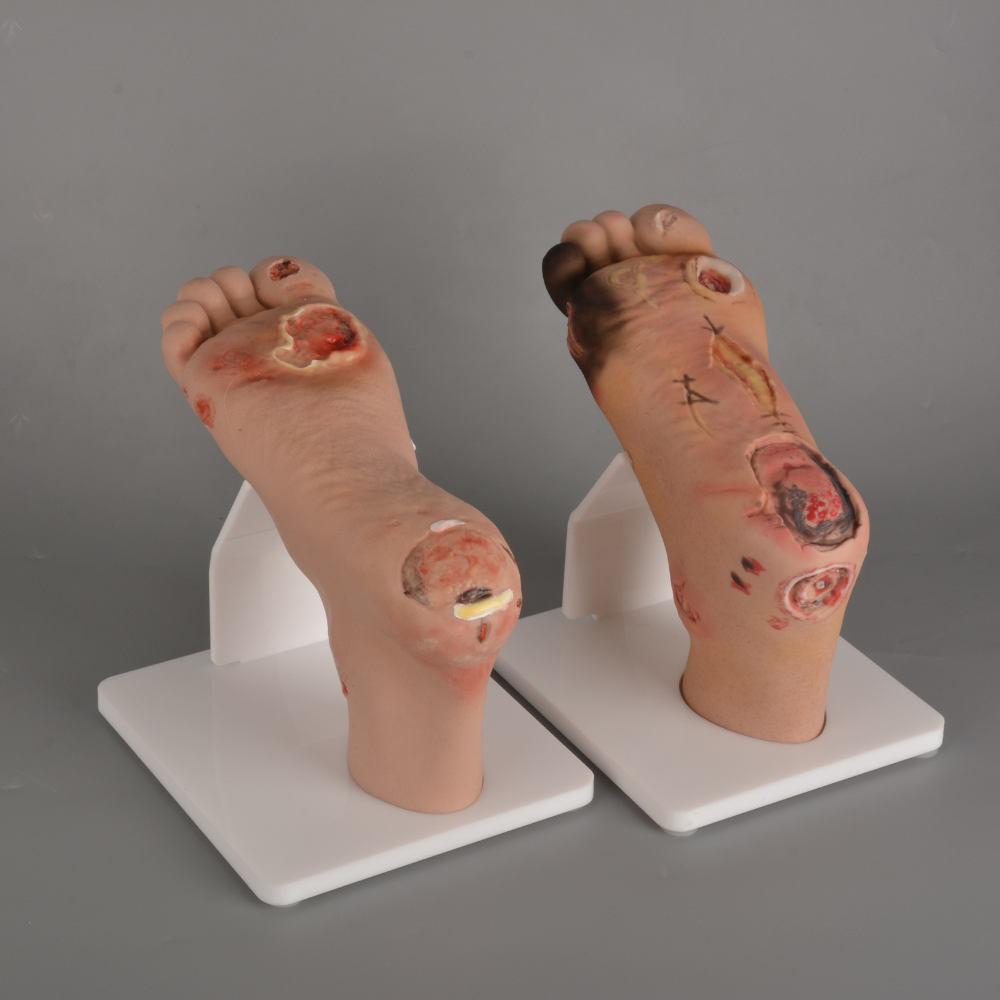Enhancing Diabetic Foot Care Training with Realistic Simulation Models

Introduction
Diabetic foot complications remain a significant challenge in clinical practice, often leading to infections, ulcers, and in severe cases, amputations. For healthcare professionals, mastering foot assessment, wound care, and preventative strategies is essential. Realistic diabetic foot simulation models provide an innovative solution for hands-on training in a safe, controlled environment.
Realistic Anatomy for Effective Training
Simulation models accurately replicate the anatomical structure of the human foot, including bones, joints, skin, and common pressure points. They also feature typical diabetic complications such as ulcers, calluses, and infections. This realism allows trainees to develop a thorough understanding of foot anatomy and pathological changes associated with diabetes.
Practical Skill Development
Using a diabetic foot model, nursing students and medical trainees can practice a range of essential skills:
- Wound Assessment: Identify different types of ulcers, necrosis, and infection sites.
- Dressing Techniques: Apply and remove wound dressings correctly.
- Pressure Point Examination: Learn to locate high-risk areas to prevent ulcer development.
- Debridement Simulation: Practice gentle debridement procedures on realistic ulcer areas.
These hands-on exercises build confidence and competence before working with real patients, reducing clinical risk and enhancing patient safety.
Ideal for Interdisciplinary Training
Simulation models are suitable for multiple healthcare training settings:
- Nursing schools and medical colleges
- Diabetes education centers
- Hospital workshops and professional development courses
They encourage collaborative learning among nurses, podiatrists, and other healthcare providers, improving interdisciplinary care for patients with diabetes.
Advantages of Using Diabetic Foot Models
- Durable, High-Quality Materials: Made with safe, non-toxic silicone for repeated use.
- Highly Visualized Training: Realistic representation of diabetic foot complications enhances understanding.
- Portable and Easy to Clean: Ideal for classroom or clinical simulation labs.
- Supports Assessment and Documentation Practice: Trainees can practice measuring ulcer size, documenting wound characteristics, and simulating clinical reporting.
Conclusion
For medical professionals, mastery of diabetic foot care is critical to reducing complications and improving patient outcomes. Realistic diabetic foot simulation models bridge the gap between theory and practice, offering hands-on training that enhances learning, confidence, and clinical competency.
These Medrchitect simulation models are available in different levels of complexity, including the Mild Diabetic Foot Model, which demonstrates early-stage complications, and the Severe Diabetic Foot Model, which simulates advanced ulcers and infections. Using both models allows trainees to gain a comprehensive understanding of the progression and management of diabetic foot conditions.
- Questions and Answers
- Opinion
- Motivational and Inspiring Story
- Technology
- Live and Let live
- Focus
- Geopolitics
- Military-Arms/Equipment
- Ασφάλεια
- Economy
- Beasts of Nations
- Machine Tools-The “Mother Industry”
- Art
- Causes
- Crafts
- Dance
- Drinks
- Film/Movie
- Fitness
- Food
- Παιχνίδια
- Gardening
- Health
- Κεντρική Σελίδα
- Literature
- Music
- Networking
- άλλο
- Party
- Religion
- Shopping
- Sports
- Theater
- Health and Wellness
- News
- Culture

